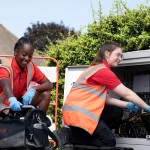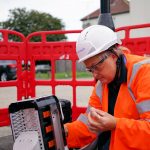UK Consumers Confused and Frustrated by Broadband ISP Speeds
A new 4media survey of 2,002 residents in rural England, which was commission by UK full fibre and wireless ISP County Broadband, has found that 57% were “frustrated” by the poor performance of their internet connection and 43% were “unsure” of the difference between “superfast” (FTTC) and “ultrafast” (FTTP) lines.
Apparently 16% of respondents said they struggled with “unreliable speeds” on a daily basis and 22% weren’t even sure what speed they were contracted to receive from their provider. Admittedly we should add the caveat that speed and connectivity issues aren’t always the fault of the broadband connection itself (e.g. poor WiFi, local network congestion and LAN device/network errors are also possible causes).
The ISP also noted how 17% mistakenly believe “superfast” connections are faster than “ultrafast”. Confusion over broadband terminology is nothing new and we’re not surprised that some are so puzzled by such terms, particularly as not even the industry always agrees on what they mean. For example, until recently the UK Government only defined superfast as being 24Mbps+, meanwhile Ofcom and the EU have long opted to adopt the 30Mbps+ definition.
Advertisement
Similarly some full fibre ISPs believe that ultrafast should be equated to speeds of 1Gbps+ (realistically this is better referenced as “Gigabit” class), while Ofcom seems to like the odd figure of 300Mbps+ and most others tend to go with the more traditional definition of 100Mbps+.
One additional catch here is that these definitions tend to only reflect download performance and often completely ignore upload speeds. As such it’s entirely possible to have an asymmetric service that may deliver, for example, 30Mbps+ download but only 2Mbps upload. Put another way, only one side of the connection is actually superfast and the other may just be.. crap.
This of course comes before we get into that ugly argument over how terms like “fibre“, “fibre optic” and “fibre broadband” are used in adverts for both slower hybrid fibre and significantly faster full fibre services (here). So it’s little wonder that consumers get confused.
Lloyd Felton, CEO of County Broadband Ltd, said:
“Our survey reveals there is a lot of confusion with many homes and businesses signing up for ‘fibre’ thinking they are getting the fastest speeds when in fact their superfast connection relies on existing copper which significantly reduces speed and reliability.
Our new ultrafast network, which uses full fibre directly into people’s home, will provide a real boost for residents, businesses and whole communities and put them in the top 6% in the UK for digital connectivity. We have already started construction and we will be rolling out across Essex over the coming months.”
Naturally the survey reflects a bit of a vest interest for County Broadband but it’s still an interesting topic to discuss. The survey also revealed the growing reliance on the internet with the average household now having 9 devices connected to their home network including one or more computer (94%), phone or tablet (91%), television (77%), Set-Top Box (66%), gaming console (42%) or digital assistant (34%).
Advertisement
Mark is a professional technology writer, IT consultant and computer engineer from Dorset (England), he also founded ISPreview in 1999 and enjoys analysing the latest telecoms and broadband developments. Find me on X (Twitter), Mastodon, Facebook, BlueSky, Threads.net and Linkedin.
« BT Wholesale UK Broadband Checker Adds SOGEA FTTC Availability


















































Comments are closed